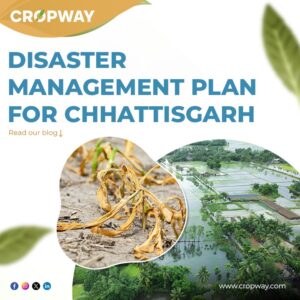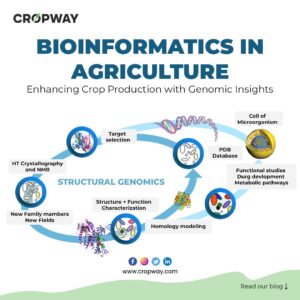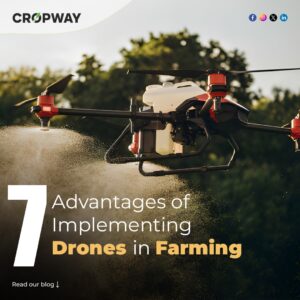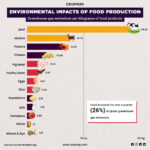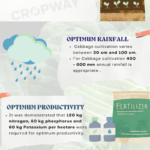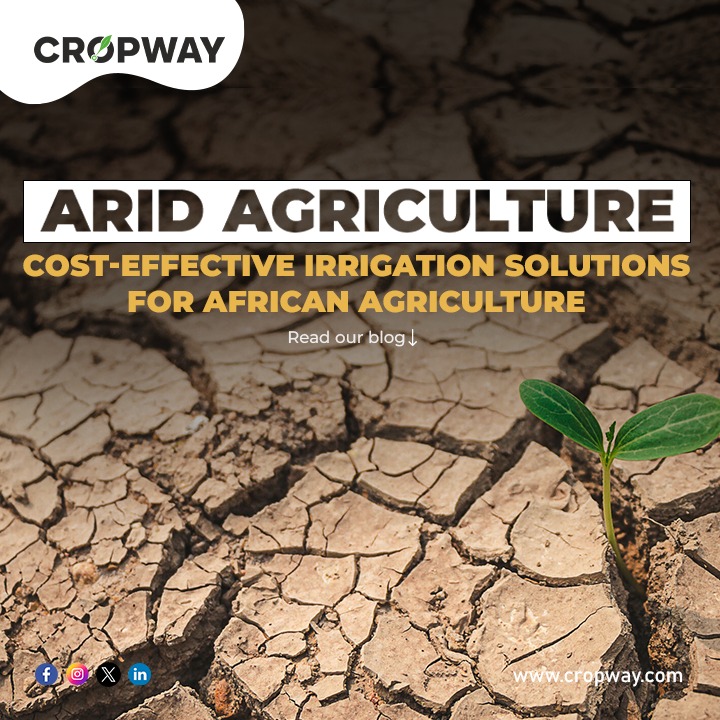
In many African countries, agriculture faces substantial challenges due to vast arid lands and limited access to water resources. The impact of these arid conditions often leads to decreased agricultural productivity, hindering economic growth and food security. However, innovative and cost-effective irrigation solutions hold immense promise in transforming these arid landscapes into productive agricultural hubs.
In Nigeria, the shrinking of Lake Chad Basin and other internal water sources has significantly lowered crop production and caused the migration of both animals and people. This situation often results in conflicts over natural resources, including violent clashes. Southern Nigeria has also experienced numerous water-related disputes. Predictions indicate that water scarcity will likely fuel conflicts in Nigeria over the next 25 years, especially with neighboring countries sharing the same water resources facing similar challenges.
Certainly, challenges in agriculture due to arid lands and water scarcity are not unique to Nigeria; they resonate across various African nations. Countries like Somalia, Ethiopia, and Sudan face similar issues, dealing with vast arid regions and limited access to water resources. In Somalia, for instance, prolonged droughts have severely affected agricultural productivity, leading to food shortages and threatening livelihoods. Ethiopia, known for its diverse climate, experiences both dry and humid conditions, impacting agricultural output, particularly in arid regions. Sudan, with its vast desert landscapes, struggles with water scarcity, hindering agricultural development and food security. These nations, among others in Africa, confront comparable challenges to Nigeria, emphasizing the urgency for innovative and cost-effective irrigation solutions in the region.
Challenges of Arid Agriculture in Africa
In arid regions, farmers grapple with water scarcity, affecting crop yields and risking failure during droughts. Managing water in agriculture aims to prevent such losses by providing timely moisture to plant roots. This challenge resonates in Nigeria’s irrigation development, facing fragmented policies and insufficient funding. Separate water and agriculture management leads to conflicting approaches, neglecting schemes and displacing farmers. The use of technology causes unintended issues like flooding. Overestimated costs and technical hurdles hinder progress. To overcome these challenges, Nigeria requires unified policies, increased funding, farmer education, and community involvement for sustainable irrigation practices in both arid regions and the country as a whole.
The Need for Efficient Irrigation Solutions
Developing effective irrigation solutions is crucial in arid environments, where maximizing limited water resources is imperative. Innovative techniques enable the optimization of water usage, ensuring consistent moisture supply for crops. Modern irrigation techniques consider various factors such as water scarcity, capital, energy, and labor to optimize usage. However, there’s no one-size-fits-all solution due to diverse economic, physical, and agricultural conditions across regions. Factors like soil, climate, water availability, labor, and costs heavily influence the decision-making process in choosing the right irrigation method, often guided by subjective preferences.
Below-Ground Irrigation Methods:
These methods directly supply water to plant roots using embedded porous containers in the soil. These receptacles release water into the soil, nurturing crop roots. They form patterns based on crop spacing and soil properties, influencing water distribution. While providing a consistent water supply, these systems need occasional flushing to prevent clogging and, in arid areas, surface leaching to avoid salt buildup.
1) Ancient Porous Jar Irrigation:
This method buries clay jars filled with water for trees and crops. Jars vary in shape and size, poured into by hand or hose. They adapt as trees grow, adding jars as needed. Water control relies on local testing. To prevent damage, jar openings are covered. Filling ranges from manual to hose-based methods. Durability depends on clogging, water quality, and monitoring for continued use.
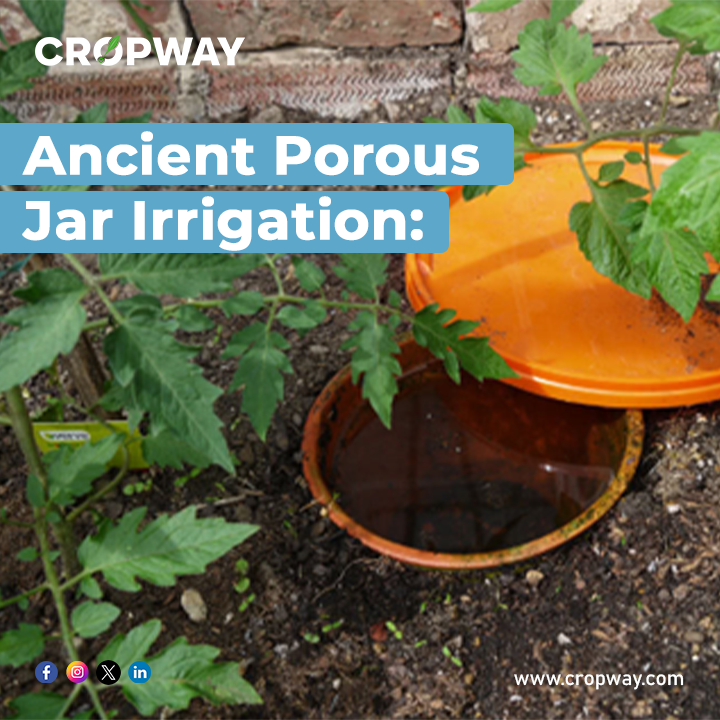
2) Perforated Plastic Sleeves:
This variant of subsurface irrigation involves thin plastic sheeting forming a sleeve-like casing filled with sand before placement in soil. However, this method has drawbacks: the sand filling reduces water capacity by 50-60%, retaining moisture and limiting outflow. Perforations in the plastic need optimization, as too many can weaken it and allow root penetration. Consequently, this method has limitations in delivering water to the soil in both volume and rate. Although it’s been used for crops in sandy soils in Senegal, its comparative effectiveness hasn’t been systematically tested against other irrigation methods.
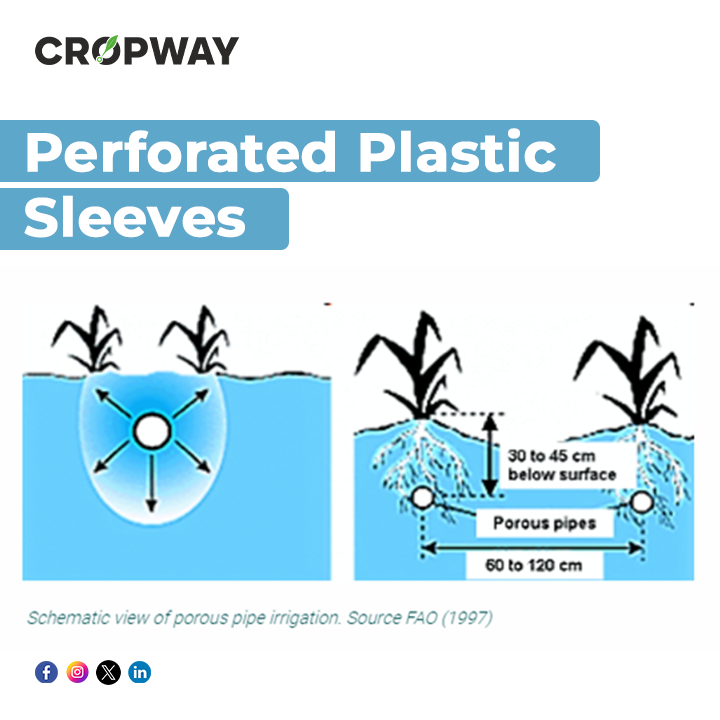
Methods of irrigation are applied above the ground surface.
1) Drip Irrigation:
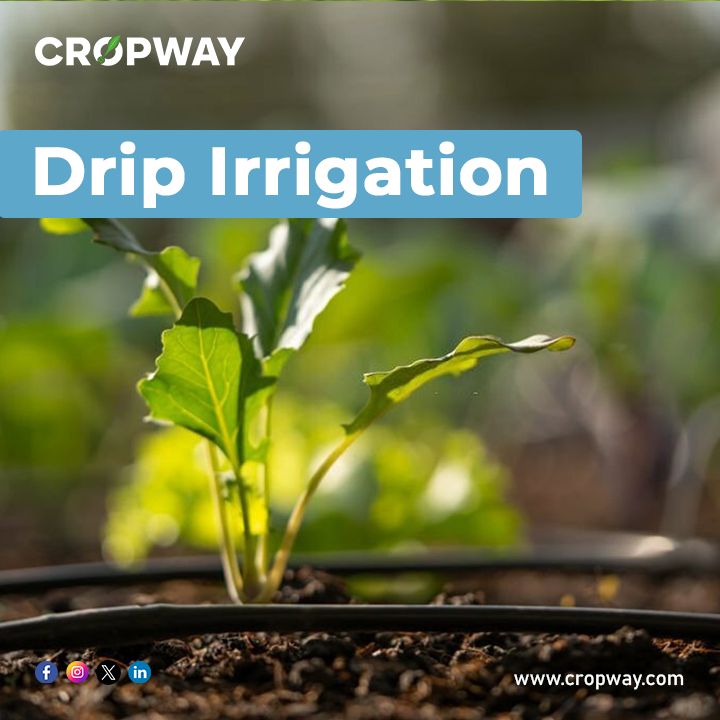
Drip irrigation is a highly efficient method that delivers water directly to the plant roots through a network of tubing and emitters placed near the base of each plant. This targeted delivery minimizes water wastage by avoiding runoff, evaporation, and surface-level dispersion. By providing water directly where it’s needed, drip irrigation ensures that plants receive adequate moisture, reducing overall water usage significantly compared to traditional irrigation methods. This technology saves water by maximizing its utilization for plant growth, preventing unnecessary loss.
2) Microsprayer
Microsprayers, like drip systems, apply water to specific ground areas, covering larger spaces than individual drip emitters. They reduce clogging risks and installation costs but increase evaporation and foliage wetting. While allowing frequent, low-volume irrigation and fertilizer injection, they may pose challenges with brackish water and fungal diseases. These systems use a tubing network and offer various emitter units in the market.
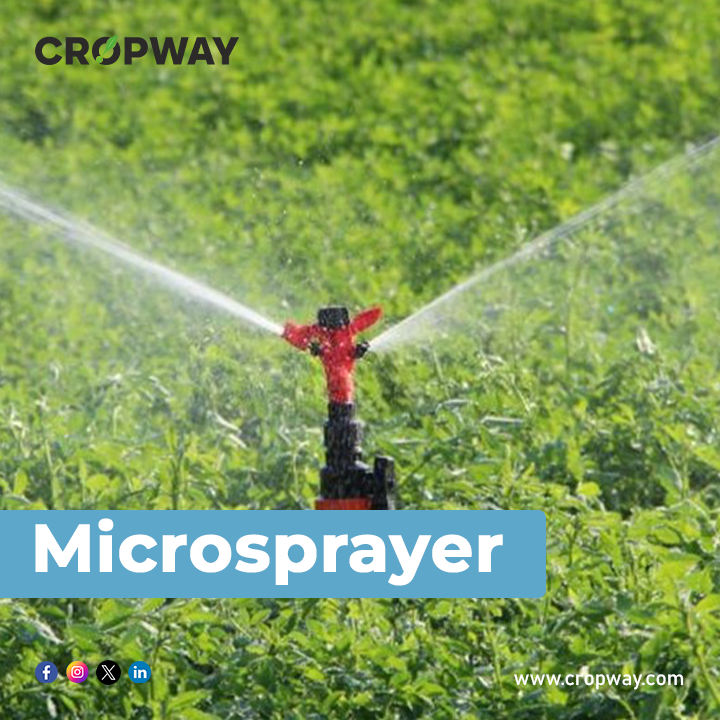
Enhancing Resilience:
Water harvesting and watershed management enhance resilience in dryland farming. Methods like erosion control, reforestation, and soil conservation curb flood risks and improve drought resistance. Increasing market access aids in coping. However, the benefits must balance against investment risks and market fluctuations. Water harvesting collects runoff, conserving water in semi-arid regions and bolstering crop yields. Unlike regular irrigation, it relies solely on unpredictable rainfall. While reduced rainfall can cause crop failure, efficient systems ensure reasonable yields in most years, even during severe droughts.
Lawali utilized an age-old method that involves crafting crescent-shaped ditches to capture rainwater during the wet season, allowing it to seep into the soil instead of flowing off the hardened surface. This straightforward technique has played a vital role in rejuvenating previously fertile but degraded land, affected by erosion, deforestation, overgrazing, and the effects of climate change.
Since 2015, nearly 20,000 hectares of agricultural and pastoral land have been revitalized using this method, supported by the U.N. The organization not only provided improved seeds to farmers but also facilitated market development, easing the process of selling their harvest.
The impact of this approach has been profoundly transformative.
Different types of water harvesting systems for plant production include microcatchments (for rainwater harvesting), external catchment systems (also for rainwater harvesting), and floodwater farming (specifically for harvesting floodwaters).
1) Microcatchments (rainwater harvesting)
Microcatchments, also known as “Within-Field Catchment Systems,” are characterized by the collection of overland flow from a short catchment area, typically spanning 1 to 30 meters in length. The harvested runoff is stored within the soil profile, maintaining a catchment-to-cultivated area ratio usually ranging from 1:1 to 3:1. These systems often lack provisions for overflow and result in uniform plant growth. Examples include Negarim Microcatchments for trees, Contour Bunds for trees, Contour Ridges for crops, and Semi-Circular Bunds for range and fodder.
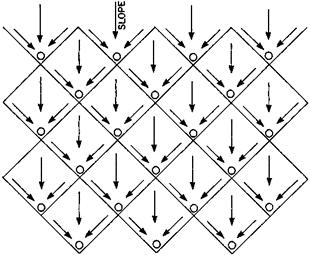
2) External catchment systems
External catchment systems, also known as the Long Slope Catchment Technique, involve harvesting overland flow or rill flow. This collected runoff is stored within the soil profile. These systems typically cover catchments ranging from 30 to 200 meters in length, maintaining a catchment-to-cultivated area ratio of about 2:1 to 10:1. They include provisions for the overflow of excess water and may result in uneven plant growth unless the land is leveled.
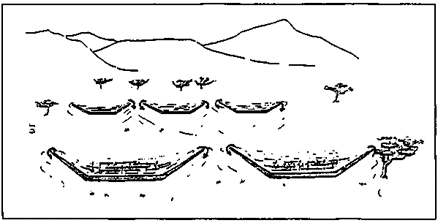
3) Floodwater farming (floodwater harvesting)
Floodwater farming, also known as water spreading or spate irrigation, involves capturing turbulent channel flow either through diversion or by spreading it within the channel bed or valley floor. This collected runoff is stored within the soil profile. These systems typically cover long catchments, often spanning several kilometers, maintaining a catchment-to-cultivated area ratio of above 10:1. They include provisions for the overflow of excess water. Examples include permeable rock dams for crops and water spreading bunds for crops.
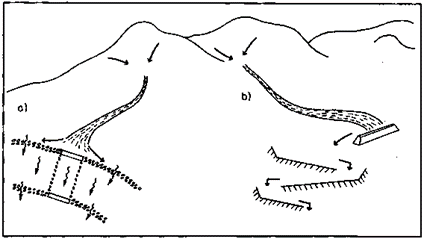
Conclusion
Efficient irrigation solutions hold the key to transforming arid lands in African nations into productive agricultural zones. By embracing innovative technologies, sustainable practices, and collaborative approaches, it becomes feasible to mitigate the challenges posed by water scarcity and climatic unpredictability. Empowering farmers with these solutions not only enhances agricultural productivity but also contributes significantly to food security and economic stability in these regions.

